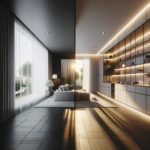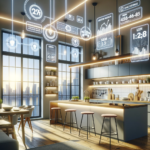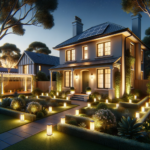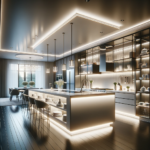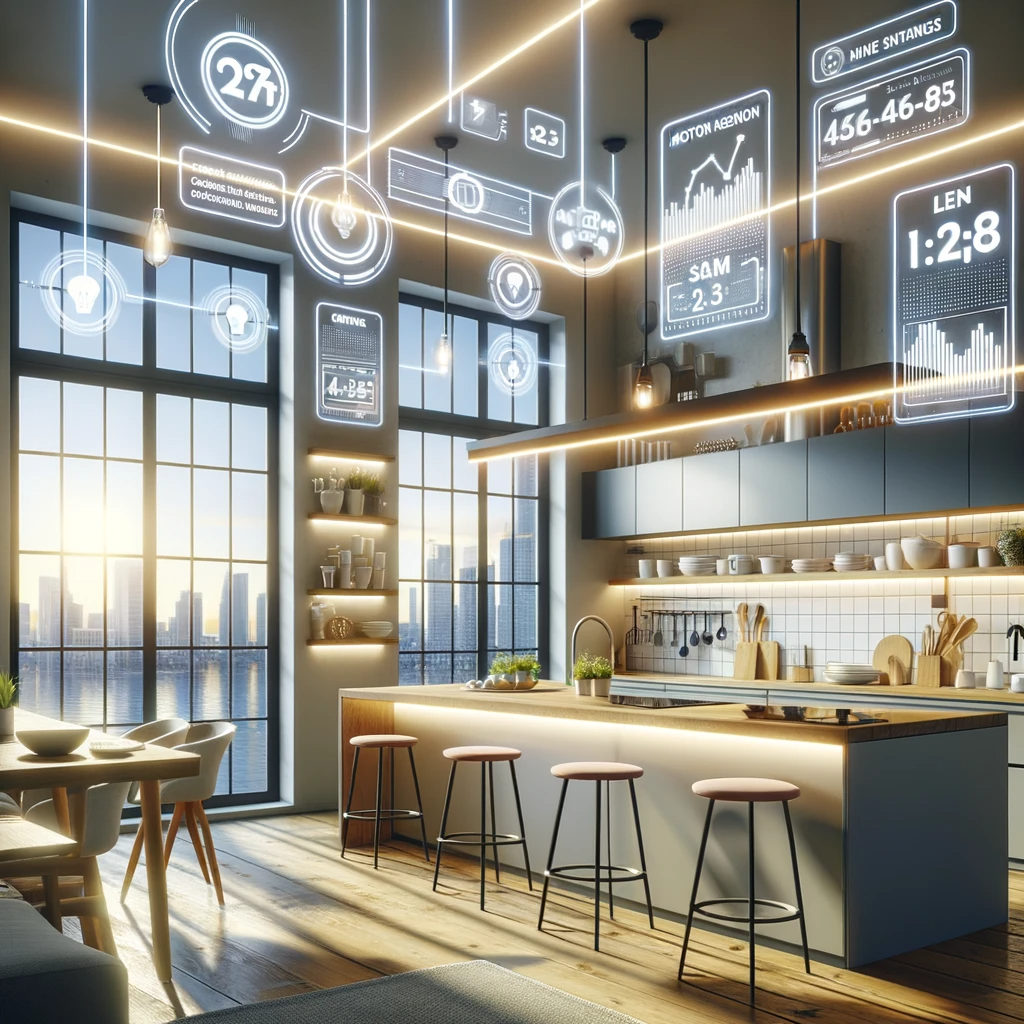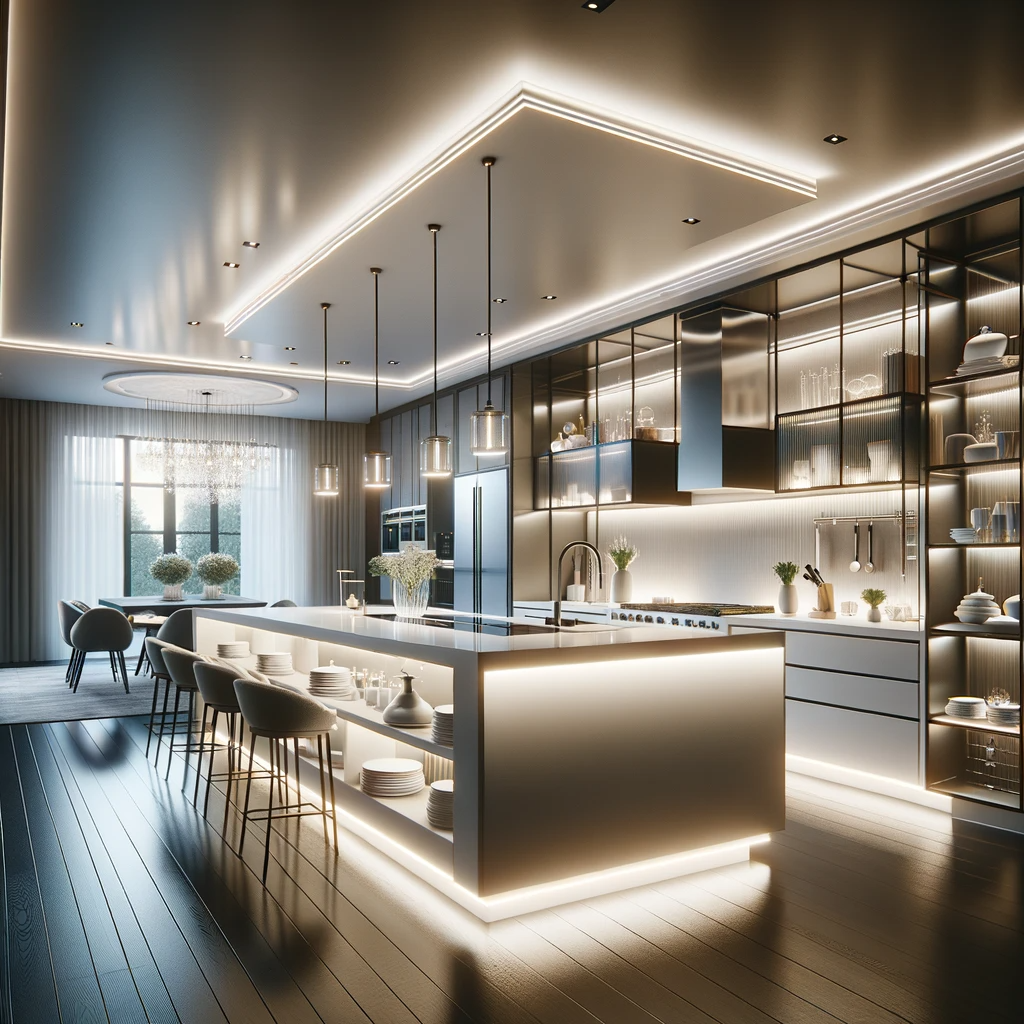Introduction
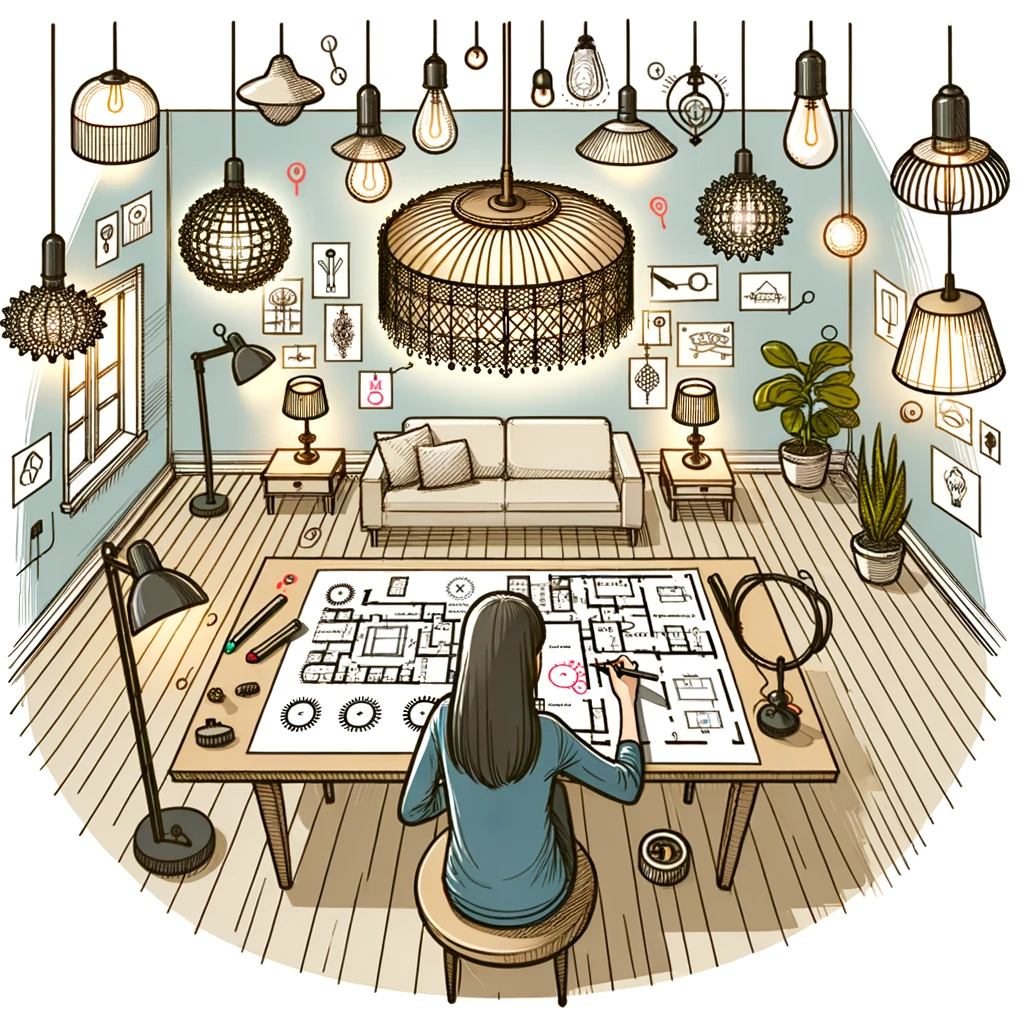
The Power of Lighting: Creating Ambiance and Functionality
Lighting plays a crucial role in our daily lives, extending beyond mere illumination. It has the power to shape the ambiance of a space and enhance its functionality.
Whether it’s a cozy living room, a productive workspace, or an inviting restaurant, the right lighting can transform any environment. By understanding how light interacts with our surroundings, we can curate the perfect lighting scheme tailored to our needs.
Layering Lighting: Crafting the Perfect Balance
Layering lighting is an artful technique that involves combining different types of light sources to achieve optimal illumination and visual interest. It goes beyond relying on a single overhead fixture and embraces a multi-dimensional approach. By strategically layering various types of lighting fixtures throughout a room, we create depth and dimension while catering to specific tasks or moods.
Through this deliberate interplay of ambient, task, and accent lighting, we can sculpt spaces that are both practical and visually pleasing. Layering allows us to control the intensity, directionality, color temperature, and even shadows in a room.
With this level of control at our disposal, we can truly personalize our environments by creating adaptable lighting scenes for every occasion. Understanding the importance of lighting as an atmospheric tool and employing layering techniques opens up endless possibilities for creating spaces that reflect our unique tastes while serving their intended purposes effectively.
Understanding the Basics of Layering Lighting
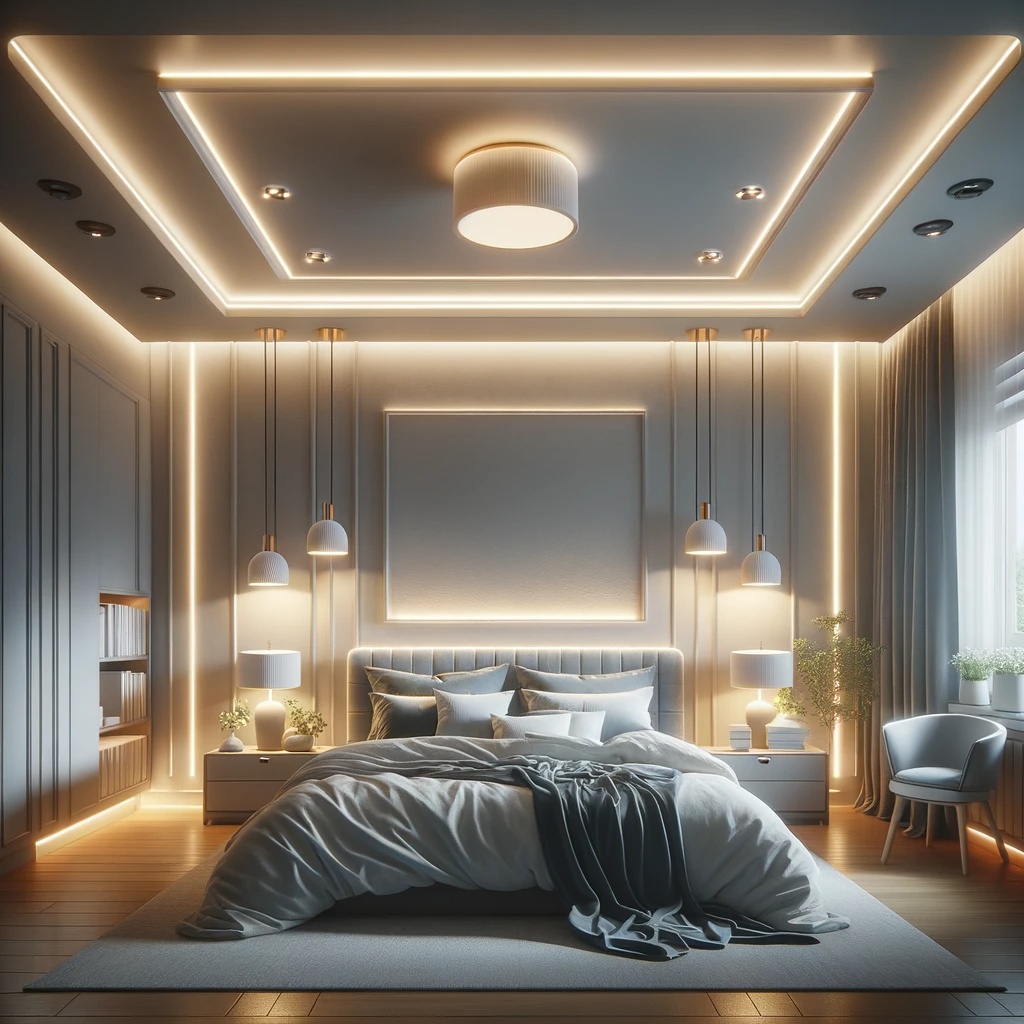
Definition of layering lighting
Layering lighting refers to the technique of combining multiple layers or types of lighting fixtures to achieve a well-balanced and visually appealing lighting scheme. By strategically placing different light sources in a space, layering lighting creates depth, dimension, and enhances both functionality and aesthetics. It involves the use of ambient, task, and accent lighting elements to create a harmonious blend of illumination.
Three main layers: ambient, task, and accent lighting
The three main layers of layering lighting are ambient, task, and accent lighting. Each layer serves a specific purpose in illuminating different areas or objects within a space. Ambient lighting provides overall illumination to create a comfortable environment throughout the room.
It ensures that there are no dark corners or shadows and sets the foundation for the entire lighting scheme. Examples of ambient lighting fixtures include chandeliers, ceiling-mounted fixtures, or recessed lights.
Task lighting is focused light specifically designed for performing activities that require enhanced visibility. Whether it’s reading a book, preparing meals in the kitchen, or working at a desk, task lights provide targeted illumination to aid these tasks effectively.
Desk lamps, under-cabinet lights in kitchens or study areas are common examples of task lighting fixtures. Accent lighting adds drama and highlights specific architectural features or decorative elements within a space.
It draws attention to focal points such as artwork on walls, sculptures on display shelves or showcases particular objects in your room design. Wall sconces casting light upwards on artwork or track lights focused on an architectural feature are typical examples of accent lighting fixtures.
Exploring Different Types of Lighting Fixtures for Each Layer
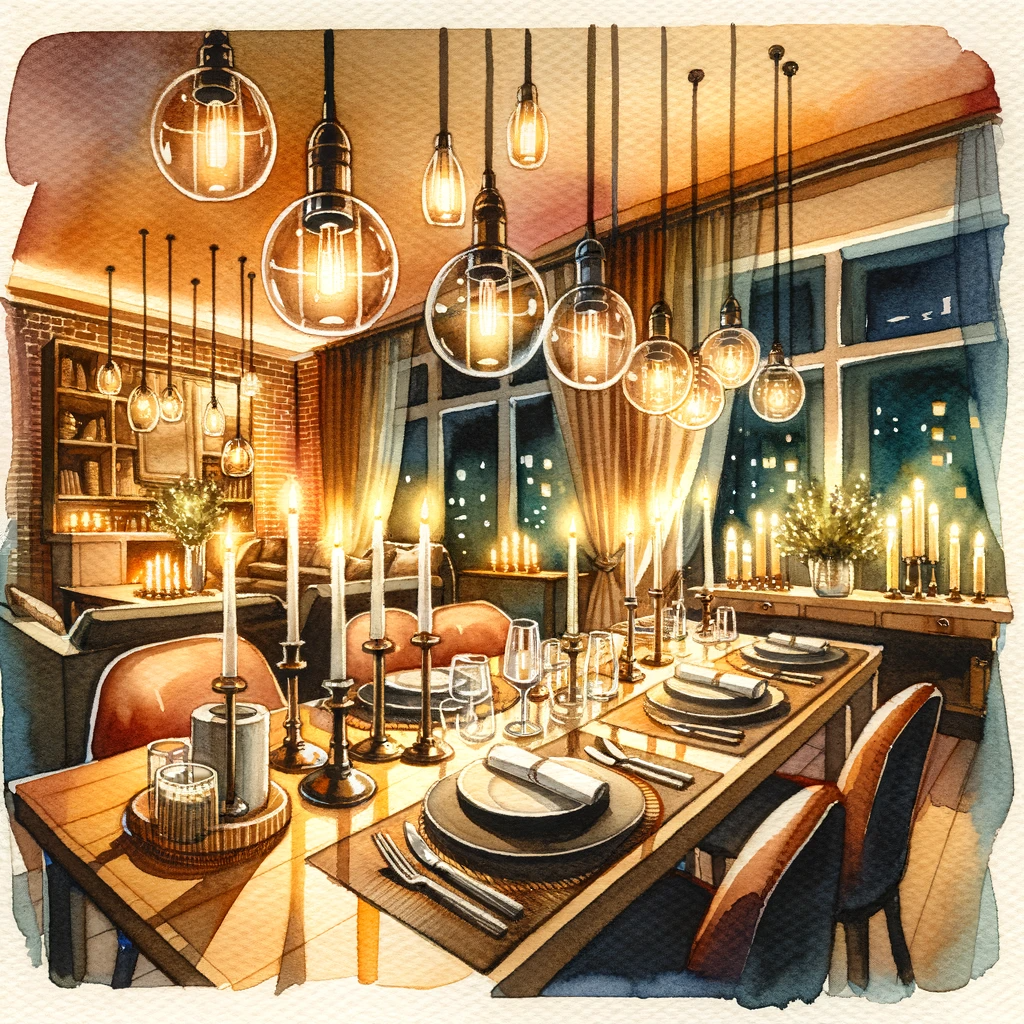
Ambient Lighting Fixtures
Chandeliers add elegance and grandeur to a space. They serve as a focal point and provide a luxurious ambiance. The crystal or glass elements reflect light beautifully, creating a stunning visual effect.
Ceiling-mounted fixtures provide general illumination evenly across the room. These fixtures come in various styles, such as flush mounts or semi-flush mounts.
They are perfect for rooms with low ceilings or when you want to achieve a clean and streamlined look. Recessed lights create a clean and minimalist look.
These fixtures are installed directly into the ceiling, giving a sleek appearance while providing ample light distribution. With adjustable trims, you can control the direction of light and highlight specific areas in the room.
Task Lighting Fixtures
Desk lamps are designed to illuminate workspaces effectively. They often have adjustable arms and heads, allowing you to direct light precisely where it’s needed most. Task lamps come in various designs, from classic banker lamps to modern LED options, offering both style and functionality.
Under-cabinet lights enhance visibility in kitchens or study areas. These lights are installed underneath cabinets or shelves to provide focused illumination on countertops or work surfaces.
LED strip lights are popular for under-cabinet lighting due to their energy efficiency and versatility. Pendant lights with adjustable heads are perfect for directing light where it’s needed.
They hang from the ceiling and can be adjusted vertically or horizontally to illuminate specific areas or objects like dining tables or reading nooks. Pendant lights come in different shapes, sizes, colors, and materials, making them suitable for any interior style.
Accent Lighting Fixtures
Wall sconces add a touch of sophistication while highlighting artwork or architectural elements. Mounted on walls, they offer both functional and decorative lighting solutions.
With a variety of designs available, including uplights and downlights, wall sconces can create beautiful shadow effects and add depth to the space. Track lights offer flexibility in positioning to highlight specific objects.
They consist of a track that holds multiple adjustable light fixtures. With the ability to move individual lights along the track, you can easily illuminate artwork, sculptures, or other focal points.
Track lights are a popular choice for galleries or spaces with changing displays. Uplights cast light upwards to create dramatic effects on walls or ceilings.
These fixtures are typically placed on the floor or recessed into the ground. Uplighting emphasizes architectural details like columns, arches, or textured walls.
It also creates an inviting atmosphere by softly diffusing light throughout the room. With these different types of lighting fixtures for each layer – ambient, task, and accent – you can achieve a well-balanced lighting scheme that not only enhances functionality but also adds beauty and character to your space.
Creating Different Lighting Scenes with Dimmers and Controls
Advantages of using dimmers for layering lighting schemes.
- Dimmers allow you to adjust the intensity of the light, providing greater control over the ambiance and mood of a space.
- By dimming or brightening different layers of light, you can create various lighting scenes to suit different activities or occasions.
- For example, you may want brighter task lighting when working or studying, but a softer, more relaxed ambiance for entertaining guests or watching a movie.
Types of dimmers available (rotary, slide, touch-sensitive).
- Rotary dimmers are the traditional type that feature a dial or knob for adjusting the light level by rotating it. They are simple and easy to use.
- Slide dimmers have a slider that moves up and down to control the brightness. They offer more precision in setting specific light levels between minimum and maximum settings.
- Touch-sensitive dimmers have buttons or touchpads where you can tap or swipe to adjust the light intensity.
These provide a modern and sleek look while offering intuitive control. Smart home technology integration for controlling multiple layers simultaneously.
- Smart home technology provides enhanced convenience by allowing you to control multiple layers of lighting simultaneously through one central system or app.
- With smart dimmer switches or smart bulbs installed, you can create preset lighting scenes that can be activated with voice commands or at specific times automatically.
- Integration with voice assistants such as Amazon Alexa or Google Assistant enables hands-free control over your lighting scheme.
- Additionally, smart home systems often offer advanced features like color-changing lights that can create dynamic lighting effects according to your preferences.
Thought-Provoking Subtitle: The Power of Dimming – Changing Your Environment with One Simple Adjustment
Conclusion
Layering lighting is a crucial technique in creating the perfect lighting scheme for any space. By understanding the basics of layering and exploring different types of lighting fixtures for each layer, you can achieve a well-balanced and aesthetically pleasing ambiance. Additionally, incorporating dimmers and controls allows for the creation of different lighting scenes, adding versatility to your lighting design.
Layering lighting provides both functionality and visual appeal to any room. By combining ambient, task, and accent lighting, you can create an inviting atmosphere while ensuring that specific tasks are properly illuminated.
The careful selection of lighting fixtures such as chandeliers, ceiling-mounted fixtures, desk lamps, wall sconces, track lights, and uplights adds depth and character to your space. Furthermore, the integration of dimmers and controls allows for easy customization and the ability to create different moods or adapt to various activities throughout the day.
By implementing these techniques in your own space, you have the power to transform it into a well-lit haven that suits your needs and preferences. Whether you’re looking for a cozy ambiance in your living room or functional task lighting in your kitchen or office area – layering lighting can help you achieve it all.
Embrace the artistry of light as it enhances every aspect of your environment with its warm glow or subtle highlights. Remember that with proper layering comes endless possibilities for creativity and comfort – so go ahead and brighten up your life!
